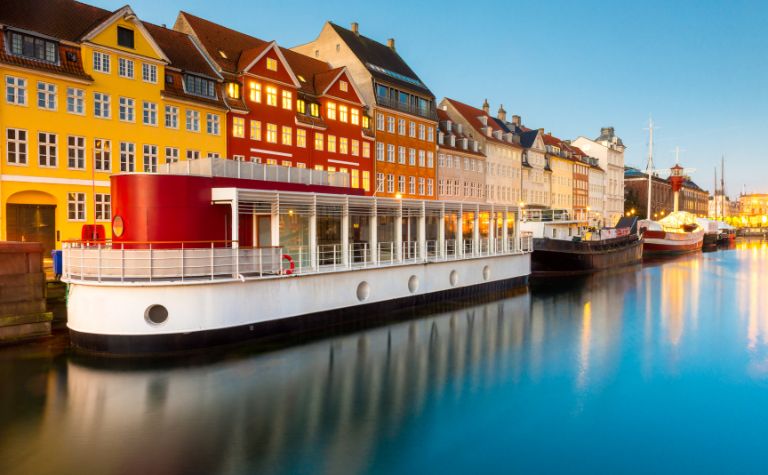Simultaneously idyllic and trendy, Denmark is high on the wishlist of many international travelers. Others may like to move there to enjoy some of the highest living standards in the world.
Both groups will need to consider the high cost of living in the country.
Denmark is expensive because the cost of goods and services in the country is high. The reasons for these high costs include some of the highest levels of taxation on income and consumption in the world and uniformly high wages that make the cost of doing business in the country high.
This article will explain why Denmark can be expensive to live in or visit and why the high cost of living in the country does not deter travelers, expatriates, and immigrants.
Also, see What Is Denmark Known For? to learn more.

The Cost of Living in Denmark
A recent study by Numbeo ranks Denmark 8th on a list of the most expensive countries in the world to live in. [1] However, these numbers are not entirely unusual and need to be looked at within the appropriate context.
For one, many of the northern European nations that are Denmark’s neighbors also rank highly by these measures. Two of its Nordic neighbors – Iceland and Norway – are even more expensive than Denmark to live in.
Besides, Denmark is one of the most prosperous countries in the world. [2] And one of the least unequal in terms of wealth distribution. [3]
Its great wealth and remarkably low inequality mean that, despite the high costs of living in the country, most Danes enjoy a relatively high standard of living compared to citizens of many other countries of the world.
Also, see What Is There To Do In Denmark? to learn more.
Reasons Goods and Services Cost More in Denmark
The reason that the cost of living in Denmark is so high is that the cost of goods and services in the country is high relative to other countries. But why is this the case?
Two main factors explain why goods cost more in Denmark: high taxes on income and consumption and high salaries.
Rents in Denmark – especially in the major cities of Copenhagen and Aarhus – are higher than in many other places in the world.
Apart from this, many other daily expenses tend to be higher. These include the cost of utilities, groceries, and dining out.
According to Statistics Denmark, prices of consumer goods in the Scandinavian nation are 37% higher than the average for EU countries.
This is because as much as 31% of the amount a customer pays for goods and services goes towards Value Added Taxes collected by the Danish government. [4]
Again, these numbers are similar to many of Denmark’s Nordic and northern European neighbors, and those of Norway, Iceland, and Switzerland are even higher.
Moreover, the average Dane earns a very respectable DKK 44,514 (equivalent to 6010 USD) every month. [5]
This is more than enough to provide for all the basic needs of a family of four, with money left over for eating out, saving to buy a house and a car, and an annual vacation. [6]
So although Denmark is indeed an expensive country to live in, most Danes still live reasonably well with the money they make.
Of course, high salaries also reinforce the high prices of goods and services in Denmark.
Danish businesses need to pay high wages to their employees, making the cost of doing business in the country high. These same costs are passed on to their customers.
Also, see How Much Does It Cost To Live in Denmark? to learn more.

Traveling in Denmark
While Danes themselves are relatively well off, many visitors to the country will find it an expensive place to visit.
Tourists from distant countries, and especially less prosperous ones, may even find the costs of visiting Denmark prohibitively expensive.
However, there are a number of alleviating factors that can make the prospect of visiting Denmark less taxing on your resources than it might seem at first glance.
Denmark is the southernmost of the Scandinavian countries.
It shares a land border with Germany and is part of the European Schengen Area, the largest Visa Free Zone in the world. [7]
Travelers from many European countries, as well as those intending to visit Europe, can find convenient and affordable rail links to the country.
For instance, it takes less than five hours to get there from Hamburg.
Once in the country, tourists can expect to find an excellent public transportation system and exceptionally good cycling infrastructure.
With a little effort, getting around in the country can be surprisingly affordable.
While dining out is expensive, high wages mean customers are not expected to tip for service as is the usual practice in many other parts of the world.
Similarly, there are many budget accommodations available, including for backpackers. And staying outside the major cities is even more affordable.
By some estimates, travelers can get by on as little as DKK1,200 (174 USD) a day once in the country. [8]
While many people in the world do not have that kind of money, these amounts are not large enough to deter prospective international tourists.
Also, see Why Is Denmark Rich? to learn more.

Taxes and the Danish Welfare State
As mentioned earlier, high taxes are a significant reason for Denmark’s high cost of living. At over 45%, the ratio of tax to GDP for the country is among the highest in the world. [9]
However, by and large, Danes are happy to pay these high taxes because they get excellent social infrastructures, government services, and social security in return.
Health and education are primarily paid for through taxes in the country. Most citizens can remain healthy and attain the degree of education they wish to without going into debt or getting bankrupt in the process.
The government even pays students a stipend to attend college, besides paying for their education. [10]
Danish citizens also receive subsidized childcare and generous pensions once they retire.
New parents can expect a combined 52 weeks of parental leave. And all workers enjoy five weeks of vacation time each year.
All these provisions are financed through the extensive taxes the government collects. They make possible a standard of living that most people in other parts of the world can only look at in envy.
Of course, a lot of this infrastructure can also be enjoyed by visitors for a short time.
Ultimately, the same factors that make Denmark expensive also make the country attractive to both Danes and visitors.
Conclusion
Denmark is expensive because of high taxes and salaries. These factors are not unusual among its wealthy northern European and Scandinavian neighbors.
Also, see Do Danish People Like Danishes? to learn more.
References:
[1] Source
[2] Source
[3] Source
[4] Source
[5] Source
[6] Source
[7] Source
[8] Source
[9] Source
[10] Source
